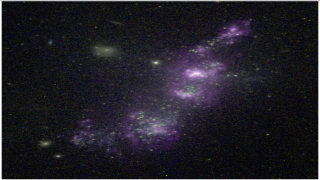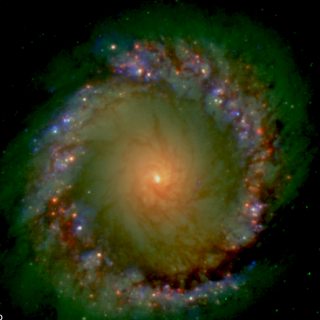Bibcode
DOI
Ramos Almeida, C.; Pérez García, A. M.; Acosta-Pulido, J. A.; González-Martín, O.
Bibliographical reference
The Astrophysical Journal, Volume 680, Issue 1, pp. L17-L20.
Advertised on:
6
2008
Journal
Citations
23
Refereed citations
23
Description
In this Letter we present clear evidence that Mrk 573 is an obscured
narrow-line Seyfert 1 (NLSy1) galaxy and not an archetypal Seyfert 2, as
it has been classified until now. Only three galaxies have been proposed
as members of this class, prior to this work. Here we report
near-infrared spectroscopic data taken with LIRIS on the 4.2 m William
Herschel Telescope (WHT). Our high-quality near-infrared nuclear
spectrum in the 0.88-1.35 μm wavelength range shows the permitted O I
λλ1.128, 1.317 narrow lines, the Fe II 9200 Å lines,
and the Fe II 1 μm lines, together with a relatively broad component
(~1700 km s-1) of Paβ. These features can originate only
in an optically thick high-density region, similar to those observed in
the broad-line region (BLR).
Related projects

Starbursts in Galaxies GEFE
Starsbursts play a key role in the cosmic evolution of galaxies, and thus in the star formation (SF) history of the universe, the production of metals, and the feedback coupling galaxies with the cosmic web. Extreme SF conditions prevail early on during the formation of the first stars and galaxies, therefore, the starburst phenomenon constitutes a
Casiana
Muñoz Tuñón

The Central PARSEC of Galaxies using High Spatial Resolution Techniques
PARSEC is a multi-wavelength investigation of the central PARSEC of the nearest galaxies. We work on black-hole accretion and its most energetic manifestations: jets and hot spots, and on its circumnuclear environment conditions for star formation. We resort to the highest available angular resolution observations from gamma-rays to the centimetre
Almudena
Prieto Escudero